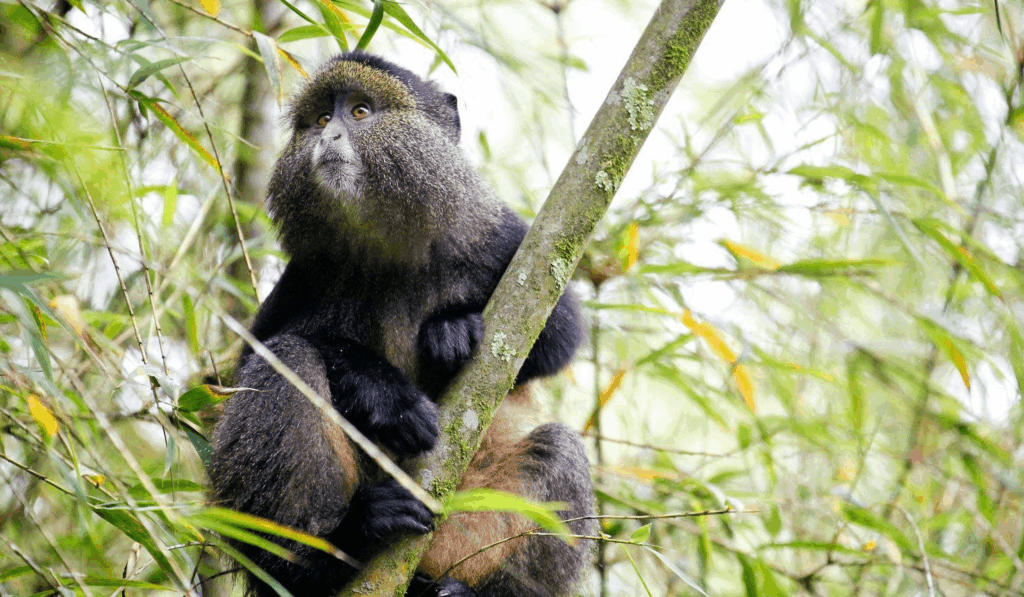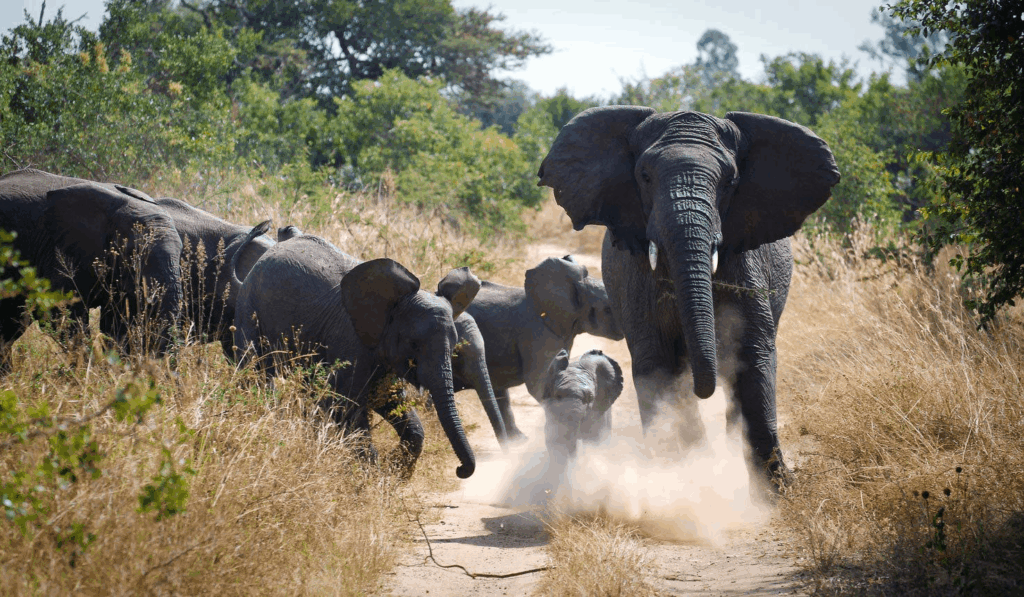Nyungwe Forest National Park is an ancient, highly biodiverse mountain rainforest in southwestern Rwanda, known for its rich primate populations, colorful birdlife, and lush scenery. It is a critical water catchment for the country and offers unique wildlife experiences, including chimpanzee trekking and the famous Canopy Walkway, which provides breathtaking views of the forest canopy. The park is also a significant site for conservation, protecting rare species and acting as a vital natural resource for Rwanda.
Covering over 1,000 km², Nyungwe is one of Africa’s oldest and most important rainforests, made up of montane forest, bamboo thickets, swamps, and grasslands. It is home to 13 primate species, such as chimpanzees, L’Hoest’s monkeys, colobus monkeys, and mangabeys, making it one of the richest primate habitats in East Africa. Beyond primates, the park shelters more than 300 bird species including many Albertine Rift endemics as well as butterflies, orchids, and medicinal plants.
Hiking trails lead through waterfalls, ridges, and dense jungle, offering immersive experiences for nature lovers and adventurers. Nyungwe also plays a key ecological role as a watershed feeding both the Nile and Congo river systems, while also supporting local communities through eco-tourism initiatives.
Key Features
Ancient Rainforest: Nyungwe is one of Africa’s oldest rainforests, a factor in its remarkable diversity.
Water Source: It is a crucial water catchment for Rwanda, with over 70% of the country’s water originating from the park.
Biodiversity: The park is bursting with life, home to over 1,000 plant species, 13 primate species (including chimpanzees and colobus monkeys), 275 bird species, and 75 mammal species.
Activities and Experiences
Chimpanzee Trekking: A highlight of any trip to Nyungwe, allowing visitors to spend an hour with a family group of chimpanzees.
Canopy Walkway: A unique suspension bridge offering breathtaking views from 70 meters above the forest floor.
Hiking: Explore various trails through the lush mountains and dense forests.
Birdwatching: A birdwatcher’s paradise, with opportunities to spot over 300 species.


